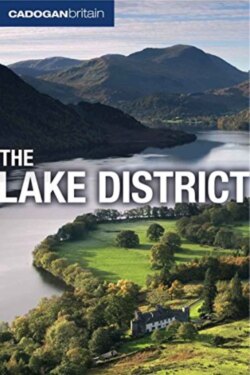Читать книгу Britain: The Lake District - Vivienne Crow - Страница 19
На сайте Литреса книга снята с продажи.
Northern Folk – the Dark Ages
ОглавлениеTowards the end of Roman rule, Britain was pretty much ruling itself, but it wasn’t until AD 410 that the conquerors finally left this far northwestern outpost of the empire to itself. So began the Dark Ages, a period of few historical documents and little archaeological evidence, when fact and fiction become intertwined and semi-mythological figures such as King Arthur and Urien of Rheged appear.
Even before the Romans left, the armies of the north were commanded by Cole Hen, who became king on their departure – probably the ‘Old King Cole’ of the nursery rhyme. On his death, his huge kingdom was carved into ever smaller territories by his descendants. One of these was Urien who ruled the kingdom of Rheged in the sixth century, a kingdom that covered much of modern-day Cumbria and may also have incorporated parts of southern Scotland, Yorkshire and north Lancashire. From his base in the Lyvennet valley (centred on the area around modern-day Crosby Ravensworth), he led other northern kings in battle against the Anglo-Saxons who were hammering hard on the door of the Celtic kingdoms. All that we know of this legendary figure comes from the verse of the Welsh bard Taliesin, who was appointed to Urien’s court.
It was also during the Dark Ages that Christianity first came to Cumbria – brought by the saints such as Patrick, Ninian, Kentigern (see here) and, later, Cuthbert.
The power of the Celts began to decline in the early seventh century and, before long, the Anglo-Saxons held power in much of lowland Cumbria. Their influence can be seen in the intricately carved crosses at places such as Bewcastle and in some place names. Towns and villages ending in ‘ingham’ and ‘ham’ are Anglo-Saxon in origin. The most common is ‘ton’ from the Anglian word ‘tun’ meaning farmstead.
While the Germanic settlers farmed the valleys, the pastoralist Vikings began settling in the uplands of the Lake District towards the end of the ninth century. These weren’t the raping, pillaging Danish raiders of modern mythology, but Norse settlers who had come from Norway via Ireland and the Isle of Man. Like the Anglo-Saxons, they too left their carved stone crosses, the most impressive of which can be seen at Gosforth (see here) and their place names. Ambleside, for example, is ‘Hamal’s saeter’, or summer pasture. Look at a modern map of Norway and you will quickly discover why the Cumbrians call their hills and mountains ‘fells’ – ‘fjell’ means mountain in Norwegian. The Norse word for waterfall is ‘foss’, which becomes ‘force’ in the Lake District; ‘tjorn’ becomes ‘tarn’; ‘dalr’ becomes ‘dale’; and ‘bekkr’: ‘beck’.
The last Celtic king, Dunmail, was defeated by Edmund I of England in AD 954, and his lands were ceded to the Scottish king Malcolm I, marking the start of centuries of bloody border conflict.
